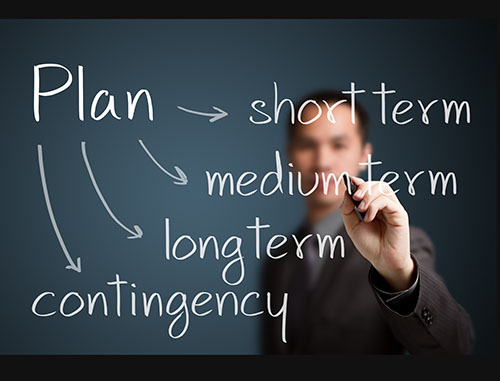
October 19, 2020
“Impact is not intent, it is the real-world difference our nonprofit makes, the results that flow from the work we do.” Simone Price
Many of us have a love/hate relationship with strategic planning, despite how critical it is to our relevance and long-term sustainability. A well-done strategic plan provides focus and direction and, when done right, helps align staff, board and stakeholders toward a common vision.
That said, most strategic plans serve as a road map for the future. And when the environment in which we work is changing at a normal pace, we have the luxury of focusing our strategy on driving change over years.
The pandemic has changed this.
The environment in which we work is changing more rapidly than it has in decades, and this impacts the length of our planning horizon. Simply put, we do not have the luxury to develop plans that may not come to fruition for three to five years out. Funders, payers and donors across the spectrum are increasingly scrutinizing education, health and social service agencies, requiring greater transparency and accountability for managing, measuring and reporting impact, financial health and overall sustainability. In addition, funders demand a demonstration of the “value proposition” before dollars are awarded, expecting to quantify the impact of their contributions, increasingly demanding that their funds leverage other resources. Further, competition is more intense, especially from large, well-capitalized for-profit companies that have increasingly entered the marketplace over the last two decades. Finally, the pandemic has created uncertainty around government funding of social services for the poor and disadvantaged.
As a result of this rapidly changing environment, any strategic planning effort must include things that we need to do both immediately and in the long term.
One of the most critical short-term strategies the nonprofit sector must embrace is an honest and in-depth analysis of impact—the Key Performance Indicators (KPIs) that demonstrate where we are in relationship to our reasons for existing. We need to understand the actual difference we are making in the lives of individuals we are funded to serve. The idea of becoming data driven is not new—we have been talking about this in the nonprofit environment for years. Still many are lagging behind in the kinds of technological sophistication required to actually measure performance. According to NTEN, despite widespread awareness, most nonprofits do not engage in consistent impact evaluation. As recently as 2016, only 12% of nonprofits allocated evaluation to their annual budgets; and of them, less than one-third have performed impact evaluation in the previous year.
While organizations may have been able to manage this deficit prior to the pandemic, today, an inability to measure impact jeopardizes sustainability. We need to be hyper-focused on measuring the value of what we do, ensuring that staff across the organization are invested in this measurement and analysis, and in taking critical steps to improve performance when indicated.
Further, this kind of detailed analysis drives the emergence of critical tactical activities, such as (for example) needed organizational investments such as technology infrastructure, training and professional development, required programmatic course correction including the elimination of some programs and expanded market share in others, improved cash management strategies, etc. The better the data and accompanying analysis, the better our tactics and our ability to weather the rapidly changing market.
As always, I welcome your thoughts.